Tom's Guide Verdict
This versatile turntable is a solid introduction for all kinds of record buyers and brings out the magic sound of vinyl.
Pros
- +
Great sound
- +
Easy setup
- +
Useful auto-stop
Cons
- -
No Bluetooth connectivity
- -
Rubber or felt platter mat costs extra
Why you can trust Tom's Guide
Price: $299 / £266
Colors: Piano black, piano white, matte white, walnut veneer
Outputs: RCA with ground wire
Drive: Belt drive
Pitch control: No
Platter: Die-cast aluminum
Cartridge: Audio-Technica AT-VM95E
Dimensions: 16.5 x 13.75 x 5.5 inches
Weight: 14.1 pounds
If you're a crate digger in search of collectable vinyl or one of the thousands of people that lined up for the chance to get your hands on this year's Record Store Day releases, the Fluance RT81+ Elite turntable is a timely reminder that it's not only about collecting records, but playing them too. While Bluetooth turntables rank among some of the best record players on the market — and are a great starting point for anyone wanting to stream playback to one of the best Bluetooth speakers — the Fluance RT81+ isn't one of them.
Even though it lacks wireless connectivity, this Fluance Elite-series record player is surprisingly versatile. It has a built-in phono stage, meaning it can be physically connected via the supplied cable to a line-level aux input on an amplifier or a powered speaker. Alternatively, users can switch out the built-in phono stage for their own.
As an upgrade of the company’s RT81 turntable, the RT81+ comes ready to play with an audiophile cartridge. There's an auto-stop mechanism too, which stops the platter from spinning to prevent stylus wear at the end of a record. To find out whether the Fluance RT81+ is a solid choice for your record store purchases, read on.
Fluance RT81+ review: Price and availability
The Fluance RT81+ turntable is priced at $299 (approx. £266) and available to buy at Fluance.com and Amazon. The RT81+ comes pre-fitted with an Audio-Technica AT-VM95E moving-magnet cartridge (priced a $69 / £49 when purchased separately) and is supplied with a hinged dust cover made of smoked plastic. It comes with a three year warranty, but Fluance will extend it by a year for a further $30.
The plinth is available in a variety of quality finishes, including a high-gloss piano black, piano white, walnut, and a limited edition matte white. All color options are priced the same.
Fluance RT81+ review: Design
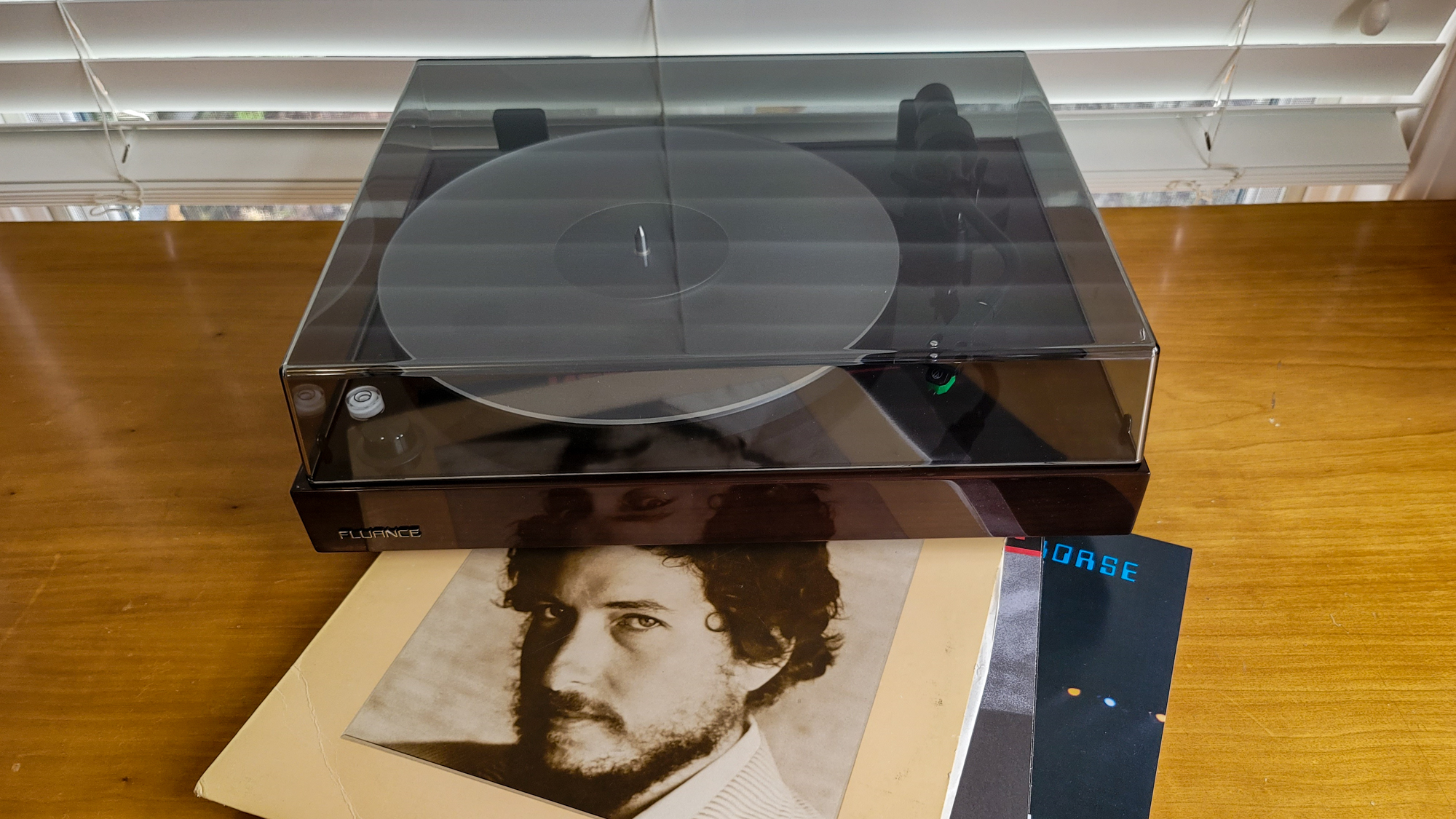
The Fluance RT81+ has all the elegance of more expensive record players. The plinth is made of the medium density fiberboard (MDF). I opted for the high-gloss walnut veneer version that actually has the look and feel of solid wood to blend with my cherry desk and other audio gear.
Underneath, the turntable has three conical feet that, happily, not only isolate the sensitive playback device from vibrations but are height adjustable. The turntable came with a bubble level but lacks a dedicated place to put it and I prefer the stability of a turntable with four feet.
Get instant access to breaking news, the hottest reviews, great deals and helpful tips.
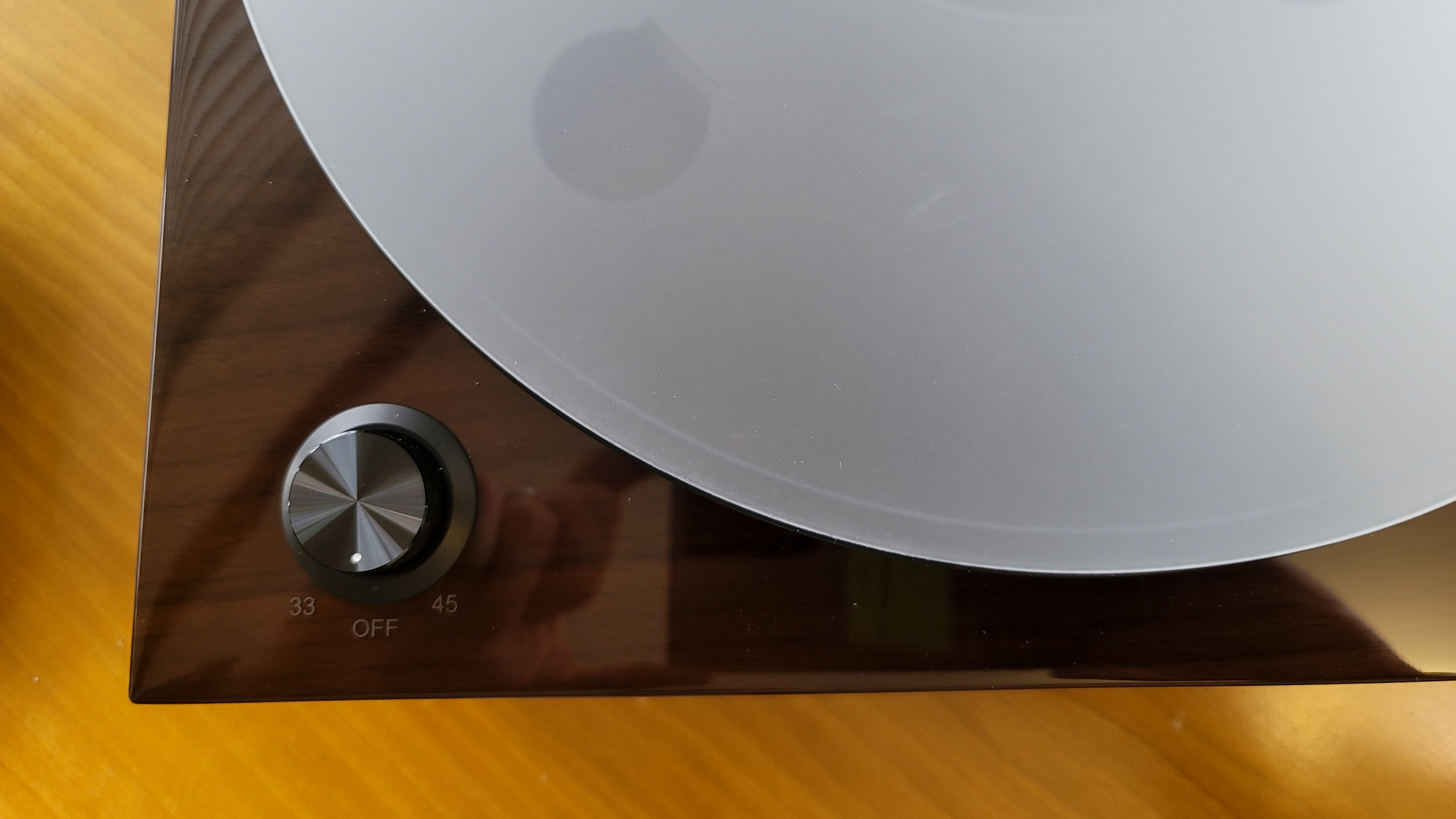
The RT81+ is a belt-drive turntable that can run at 33 or 45RPM playback speeds. It comes with a center adapter for playing retro singles. The S-type tonearm is made of lightweight aluminum and the H-4 bayonet head shell is fitted with Audio-Technica's AT-VM95E moving-magnet cartridge.
While I like the dampened aluminum platter, its hard acrylic mat rubbed me the wrong way. I much prefer a rubber, silicon or felt one and it might be the first accessory I’d buy for the RT81+. Also, the RT81+ lacks a strobe and manual pitch control for manually adjusting its speed, although its servo-controlled motor automatically adjusts the rotation to within a claimed 1%.
Fluance RT81+ review: Connectivity and setup
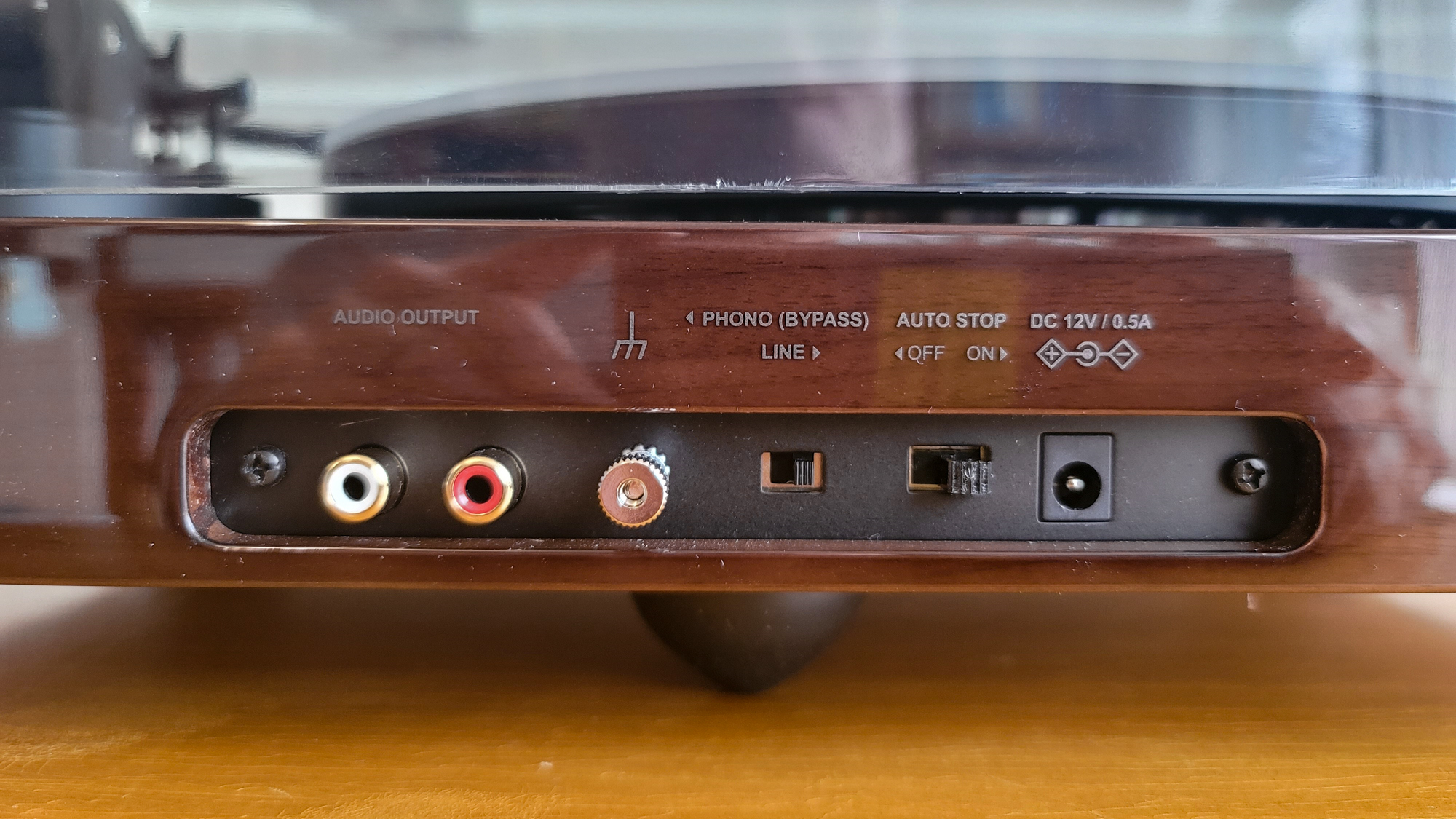
The RT81+ has a built-in phono stage pre-amp should you wish to connect the turntable to a line-level aux input on the back of an integrated amplifier or powered speaker. Happily, there’s a bypass switch that allows the signal to go to a self-standing phono stage preamp or directly to a dedicated phono input on one of the best AV receivers.
Along with the turntable’s gold-plated RCA audio plugs and grounding wire, there’s an auto-stop mechanism select switch to stop the platter from turning at the end of a record.
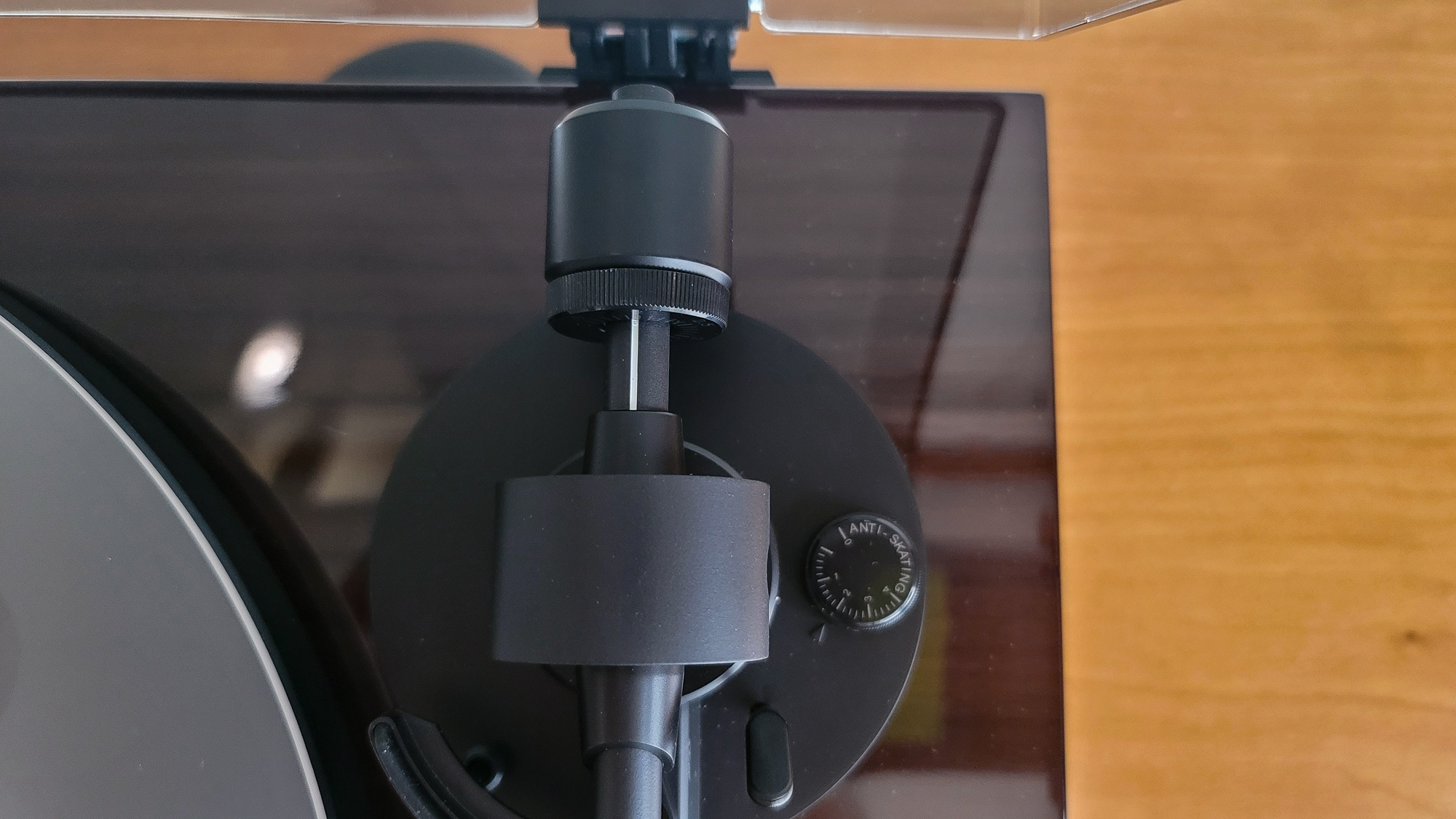
Getting the RT81+ working was simple and took all of five minutes. As is often the case for me, the hardest part was getting the belt on both the platter and drive pulley but I got it on the third try; the included guide ribbon didn’t help. Once the head shell was in place, the cartridge’s protective cover removed and the tonearm’s counterweight installed, I adjusted the downforce to 2.0 grams and set the anti-skate control to 2.0.
Fluance RT81+ review: Sound quality
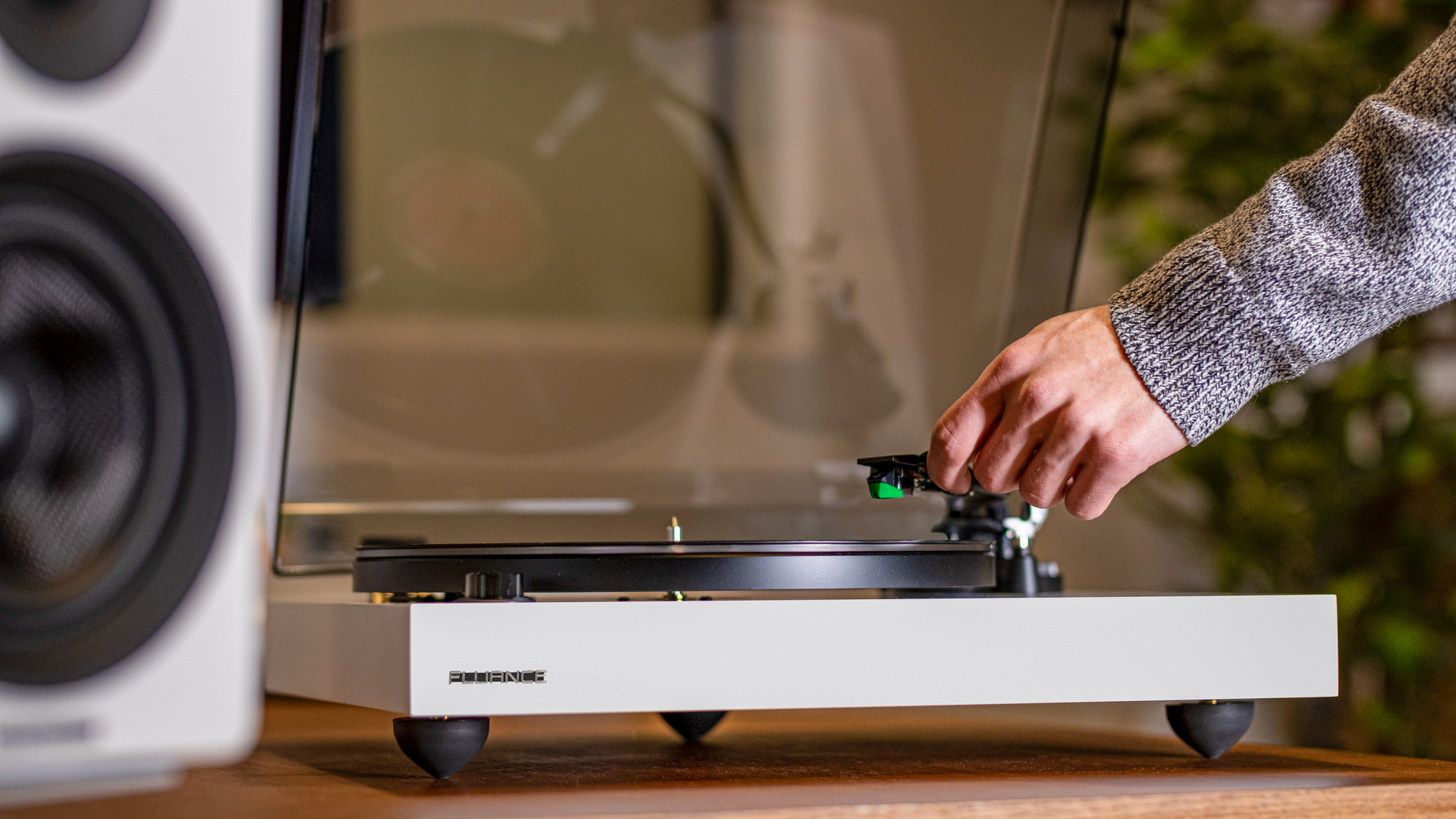
Using my Edifier RT1280T powered speakers, I started spinning records with an original pressing of Bob Dylan’s New Morning album. While it was free of hum and feedback, all its 1970s pops and static came through. Still, it yielded a warm feeling with plenty of midrange richness, particularly as Bob’s wailing voice came through loud and clear on the title track with more vibrancy and urgency that I recall it having.
It worked even better with my analog Sherwood audio receiver, Acoustic Research speakers and a copy of Trombone Shorty’s Parking Lot Symphony that showed the dynamic range that the Fluance RT81+ was capable of. On "Tripped out Slim", the turntable not only accurately caught the low volume, low frequency trombone notes at the beginning but was able to realistically render the free-flowing funk on the rest of the song. It made me get up and boogie.
Finally, playing a fresh pressing of Neil Young’s Rust Never Sleeps, the melancholy harmonica solo on "Thrasher" was sharp, brilliant and came through without distortion. It all came together for the RT81+ with the album’s bookends: the opening acoustic "My My, Hey Hey (Out of the Blue)" and the electric rocking "My My, Hey Hey (Into the Black)" closing song. Showing the turntable’s versatility, the mellow first version’s ability to deliver subtle sonic details with vitality while the raucous second version captured the tune’s raw musical energy, distortion guitar tracks and all. It all creates an impressive sonic wall of audio that the Fluance RT81+ successfully delivered.
Fluance RT81+ review: Verdict
Overall, the RT81+’s operation was glitch free and its smooth operation was impressive considering its $300 price. After going through stacks of records, old and new, I came to the conclusion that while it misses digital tricks like sending music directly to a pair of wireless speakers via a Bluetooth connection or for digitizing my vinyl with a USB port, the old analog way was simple, straight-forward and just might be the best approach to spinning records.
During my month of daily use, it sounded pitch perfect. The Fluance RT81+ sang in a way no other turntable in its price range can and looked great doing it. It may not be as flexible as some models, but the compromises that Fluance engineers made in designing and building the RT81+ are balanced, yielding an audio device that you can be proud of.
More from Tom's Guide
- Dual's fully-automatic turntable is the lazy answer to playing records
- 7 turntables under $500 I'd buy right now
- I ditched vinyl for streaming, but this Bluetooth record player got me back on track
Brian Nadel is a freelance writer and editor who specializes in technology reporting and reviewing. He works out of the suburban New York City area and has covered topics from nuclear power plants and Wi-Fi routers to cars and tablets. The former editor-in-chief of Mobile Computing and Communications, Nadel is the recipient of the TransPacific Writing Award.


